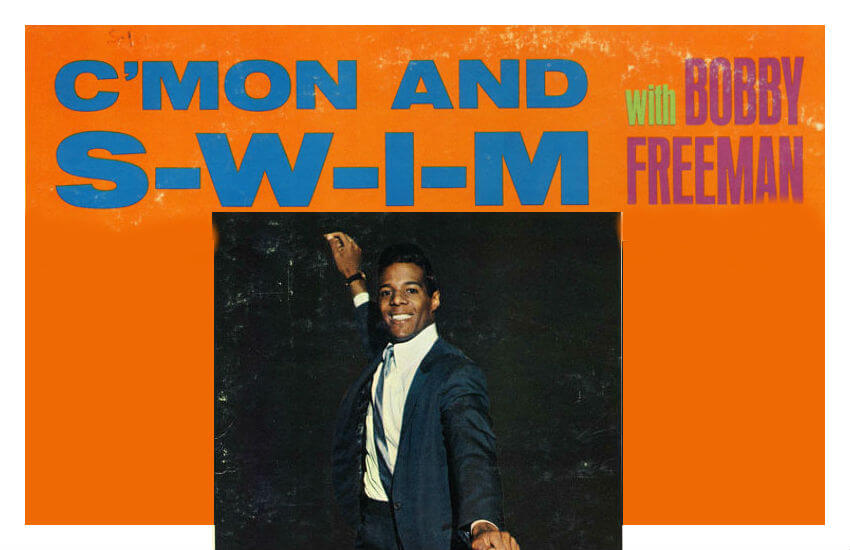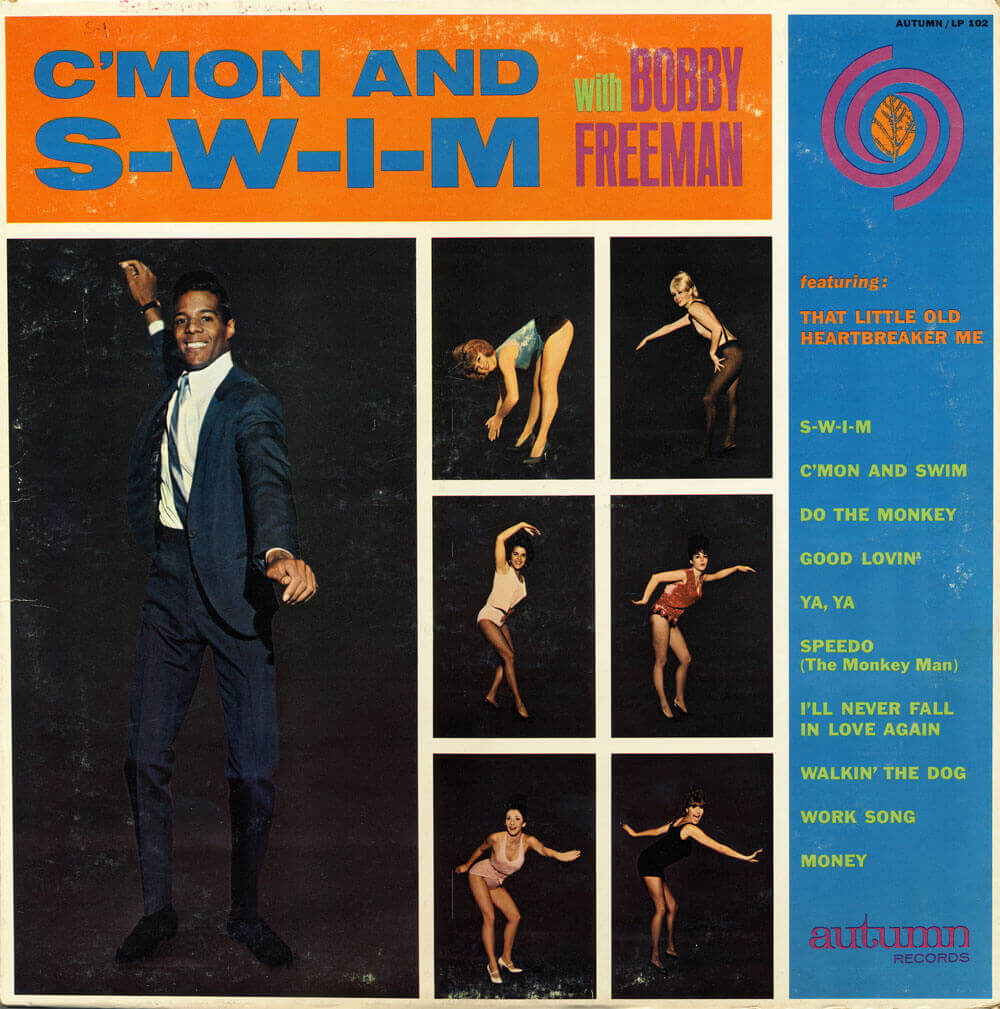Black History Month – Remembering Bobby Freeman

Commentary by Bruce Wigo, ISHOF President/CEO
On January 23, Singer/songwriter Bobby Freeman, whose song “C’mon And Swim” climbed the pop charts in the summer of 1964, passed away at his home in Daly City, Calif. According to his son, Robert, Jr., the cause of death was a heart attack. He was 76 and his death has not been widely reported. Better known for his 1958 hit, “Do You Want to Dance,” “C’mon And Swim” has long gone unnoticed or unappreciated for the unintended political and cultural implications it had for our nation, at the height of the historic debate concerning the passage of the Civil Rights Act of 1964.

Photo Courtesy: Autumn Records
By 1964, it had been almost 100 years that African Americans had been barred from most of our nations beaches and pools because, according to historian and author Jeff Wiltze (Contested Waters: A social history of swimming pools in America), the thought of black men interacting with white women (and vice versa), in skimpy bathing attire, stirred up the murky waters of sexuality and popular prejudices.
There is a marker on the beach, a short walk from the Hall of Fame, commemorating the peaceful wade-ins that led to the integration of the beaches of Fort Lauderdale in 1964. Demonstrations in other cities were not so peaceful.
In St. Augustine, Florida, race riots broke out when angry whites attacked peaceful demonstrators attempting to integrate the beach. A notorious photographic of motel owner James Brock pouring muriatic acid on integrationists in St. Augustine, who trespassed into his segregated pool, made national headlines. The reaction to this image is partly credited with influencing the passage of the Civil Rights act of 1964.
In one of several “C’mon and Swim” videos on Youtube, Bobby, an attractive and charismatic black man, is shown teaching 8 scantily clad white girls how to swim. For many young Americans, the SWIM was just another go-go dance, like the “twist”, the “Pony,” the “Slop” or other popular dance steps of the era. In the video, he is showing the girls how to do freestyle, backstroke and breaststroke with his hands. For hardcore segregationists, however, it stirred up the sentiments Wiltze wrote about that led to the closing and or privatization of public pools, that would continue de facto segregation of swimming well into the 1970’s.
Several years ago, I tried to contact Freeman to see if his song and the video were intended to be a political statements. Unfortunately, I wasn’t able to find him, but was able to communicate with Joel Selvin, a San Francisco based music critic and author. According to Selvin, the video clips featuring white dancers was because TV stations in those days did not employ integrated dancers, although they occasionally let black artists sing and dance with them.
The dance, he said, was invented by a lady named Judy Mac at the Galaxie, a SF discotheque. The song itself was written by Sylvester Stewart (aka Sly Stone) and Tom Donohue.
“Although no social comment was intended by the writers, of the performers or even the director of the TV,” says Selvin, “the symbolism remains.”
All commentaries are the opinion of the author and do not necessarily reflect the views of Swimming World Magazine nor its staff.




I think back to those days, my mother told me how UPSET this Southern Colonel was when I recruited a black, and Jew and Dutch swimmer for our AAU team in 1965. I asked her which guy offended him the most and she broke out laughing so hard.